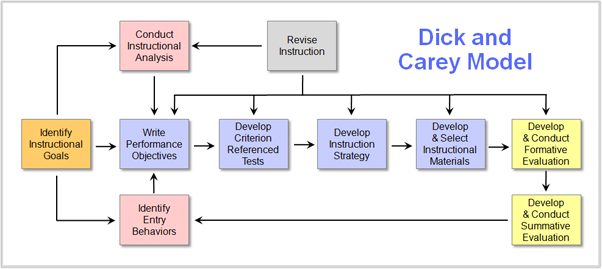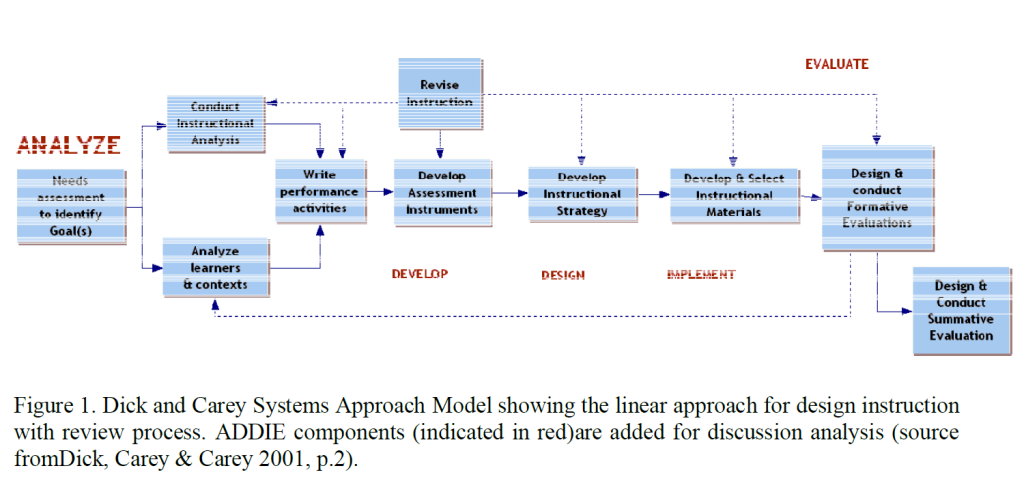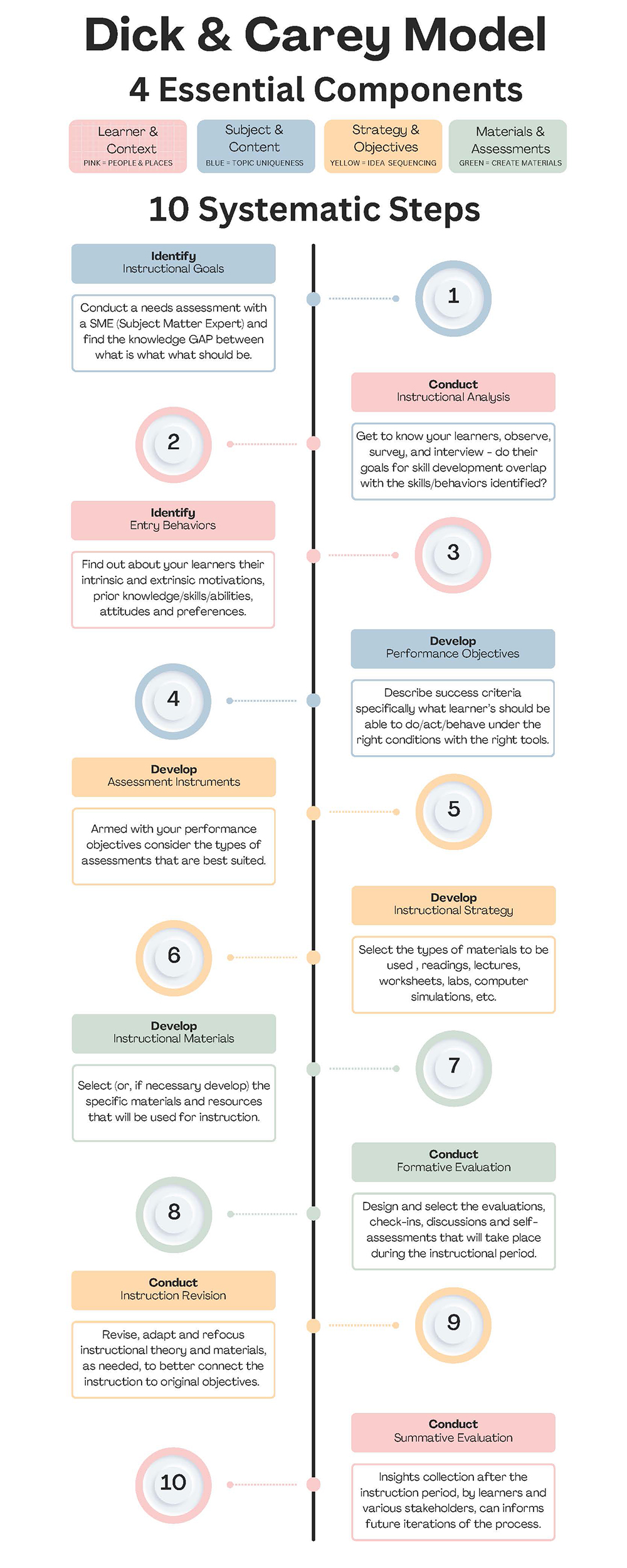Week Three
The Dick and Carey Model
I was frankly surprised to hear how popular the Dick and Carry model was (only second to ADDIE?). I’ve been doing an Instructional design job for nearly a decade and I’ve scarcely heard of it. However, after I went through the learning materials, I realized, I still had only a partial understanding of the model. As a result, I decided to supplement my knowledge by reading other sources. While I understand the intent of the model, I was left with one burning question, one I remain unsure about how to answer, it’s this:
How exactly do the 4 essential components relate to or overlap with the 10 systematic steps?
While wording and number of steps have changed a bit over time, apparently other scholars have tried to map the model visually or describe it more directly, for whatever reason, these didn’t clarify things for me:



I felt and still feel that I completely understand the four essential components and the 10 systematic steps individually, but I still cannot adequately discuss the model and its implications for Instructional Design until I can properly conceive of exactly how the four essential components and 10 systematic steps fit together into the larger picture. I haven’t nailed it, perhaps this is just another misguided attempt to see the model / framework that’s both logically consistent and applicable to the real world of course delivery.

WORKS CITED
GRAPHICS
Figure 1 – (2023). Educationaltechnology.net. https://educationaltechnology.net/wp-content/uploads/2015/11/dickcareymodel.jpg
Figure 2 -TWOWP. (2019, August 3). The Dick and Carey Instructional Design Model – The World of Work Project. The World of Work Project. https://worldofwork.io/2019/08/dick-carey-instructional-design-model/
Figure 3 -Azizah, N. (2017). Comparative Theory on Three Instructional Design Models: Dick and Carey, Kemp, and Three-Phase Design models. Comparative Theory on Three Instructional Design Models: Dick and Carey, Kemp, and Three-Phase Design models, 1-12.
Figure 4 – “Dick_Carey_EFP-1” by Elaine Farrally-Plourde is licensed under CC BY 4.0

